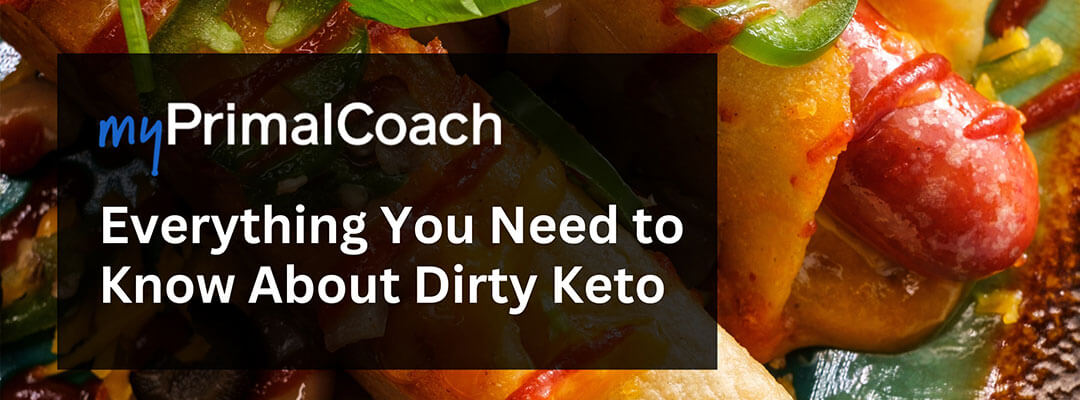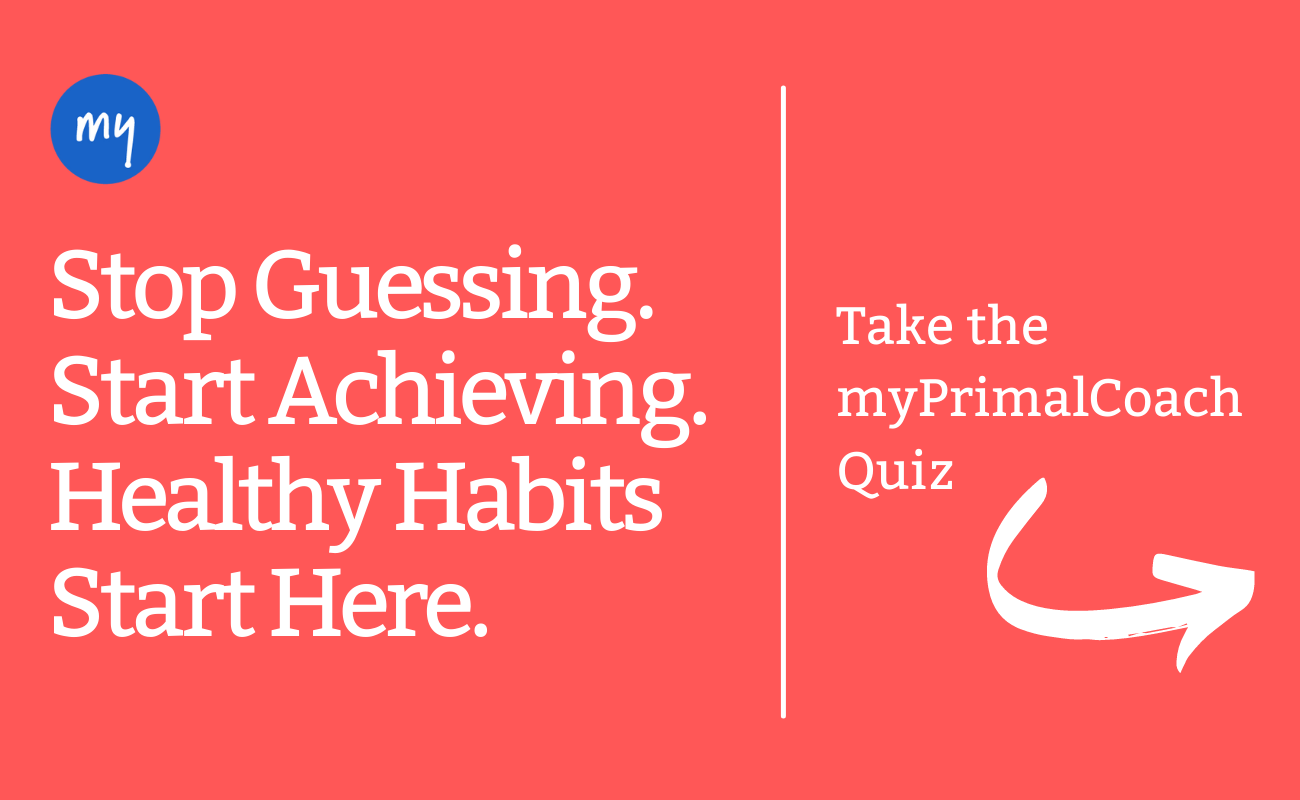Most people are familiar with the popular diet terms keto and clean eating, but what on earth is dirty keto?
Dirty keto is a new trend gaining traction on social media. Whilst dirty keto isn’t exactly as ominous as it sounds, it’s not the best way to approach a keto way of eating. Read on and we’ll explain why.

What Is Keto?
Keto is short for ketosis, a metabolic state where your body uses ketones for energy instead of blood sugar, or glucose. Your body will use fat for its primary source of energy when your carbohydrate stores are low. Ketones are made by the liver when it breaks down fats, from both dietary fat (from the food you eat), or stored body fat.
The term keto diet refers to a very low carb diet. Generally speaking, a keto dieter will typically increase their fat intake, while keeping their protein intake moderate. But, the high fat intake isn’t what defines a keto diet. It’s the low intake of carbs. Keto diets have seen great success with weight-loss, because your body will convert your stored body fat into ketones (and energy) when your carbohydrate intake is low, but more on this later!
While labeling food clean or dirty isn’t the best way to approach nourishing your body, buzzwords are buzzwords, and it’s helpful to know one from the other and the pros and cons that accompany them. So, let’s jump in and find out just what dirty keto is and why a cleaner approach to a keto diet is the way to go.
What Is Dirty Keto?
How can a diet that is a metabolic state be considered either dirty or clean? Well, similar to calorie counting, if you only focus on the grams of carbs and fat you consume, the quality and nutritional content of the food can become a free-for-all. With calorie counting, one focuses on a calorie deficit. With a keto approach, one focuses on carb intake and a specific fat-to-carb ratio. Since keto is a metabolic state, one could eat a Snickers bar, stay within their keto macros, and call it a day (definitely not recommended!).
Dirty keto takes a more relaxed approach in terms of what’s on your plate. It focuses purely on keeping your carb intake low, regardless of the quality of the food source. Processed foods are not off the cards, as long as your keep the carbs at a minimum.
As with any trending buzzword or fad diet, the emergence of new food products on the market is quick to follow the spike in popularity. Food packages have been splattered with fat-free, gluten-free, and vegan for quite some time now. And more recently, keto can be found front and center. However, no governing body regulates the words used on a label. What’s more, keto-friendly is popping up on labels too—given the Snickers bar example, couldn’t just about any packaged food be considered “keto-friendly”?
Ultimately, dirty keto involves including not-so-healthy nor nutrient-dense packaged and ultra-processed foods in your diet.
Dirty Keto vs. Clean Keto
Compared to dirty keto, the difference is pretty clear—clean keto means cleaner foods, i.e., real, whole foods that are not heavily processed and are nutrient-dense and high-quality. Again, dirty and clean are probably not the best words to describe either way of eating, but they’re buzzwords and good at getting the point across.
With dirty keto, you can technically eat whatever you want as long as you adhere to the set macros that keep you in ketosis. With clean keto, you do the same but focus on choosing the best source of each macronutrient.
Both approaches to the keto diet will work if you’re strict and track your intake of each macro carefully. However, you may miss out on essential micronutrients and ingest unwanted additives and sneaky sugars that can keep you from reaching your health goals—not to mention keep you from feeling your best. In addition, the packaged foods allowed with dirty keto are usually high in sodium, and the artificially sweetened cookies and keto treats probably won’t help with sugar cravings when you’re getting started.
Many people find a compromise between the two keto approaches over time. Starting with a strict, clean keto diet and eventually adding in the occasional packaged keto treat or bunless hotdog. Ultimately, it comes down to what is most sustainable for an individual. But dirty keto every day, all day, will undoubtedly lead to nutrient deficiencies and probably some digestive issues and other health woes.
Dirty Keto Food List
The foods that make the dirty keto list are mainly highly processed foods, and the majority of keto packaged snacks are chock full of food additives:
- Processed cheese
- Refined vegetable oils such as soybean and canola oil
- Trans fats
- Drinks with artificial sweeteners, such as diet soda and sports drinks
- Sugar-free candy
- Deep fried food
- Fast food without the bun
- Conventional bottled salad dressings and condiments
- Packaged and processed meats such as bacon and hot dogs
- Pork rinds and jerkies
- Packaged keto snacks and treats such as cookies, chips, bars, and candies
- Keto pancakes, breads, and muffins
Clean Keto Food List
Keto foods that are considered clean foods and make the list include:
- High-quality proteins such as grass-fed meats, pasture-raised organic eggs and poultry, and wild fish and shellfish
- Healthy fats such as coconut oil, avocado oil, olive oil, walnut oil, sesame oil, grass-fed butter and ghee
- Low-carb vegetables such as leafy greens, cauliflower, broccoli, green beans, Brussels sprouts, and asparagus
- Green vegetable juices
- Low-sugar berries such as blueberries, raspberries, and blackberries
- Nuts and nut butters, such as almonds, macadamia nuts, walnuts, brazil nuts, and pecans
- Seeds such as flax, sesame, and chia seeds
- Full-fat organic and grass-fed dairy products
- Unprocessed foods and snacks such as 100% unsweetened chocolate
Summary
A traditional ketogenic diet, a.k.a. a clean keto eating plan, is the way to go if you want to maximize fat burning while consuming unprocessed, nutrient-dense foods. While a dirty keto diet is probably more accessible—and those keto cookies sure are appealing—in the long run, you probably won’t be meeting your nutritional needs and may ultimately be doing more harm than good to your body and health.
A nice compromise could be the lazy keto diet, which focuses on food quality but with less of an emphasis on following strict macros. The lazy keto diet prioritizes clean keto foods but is more relaxed about how many carbs and fat grams you consume.
If you’re interested in learning more, a myPrimalCoach is always at the ready to help you ditch dirty keto and start eating in a more sustainable and healthy way.

